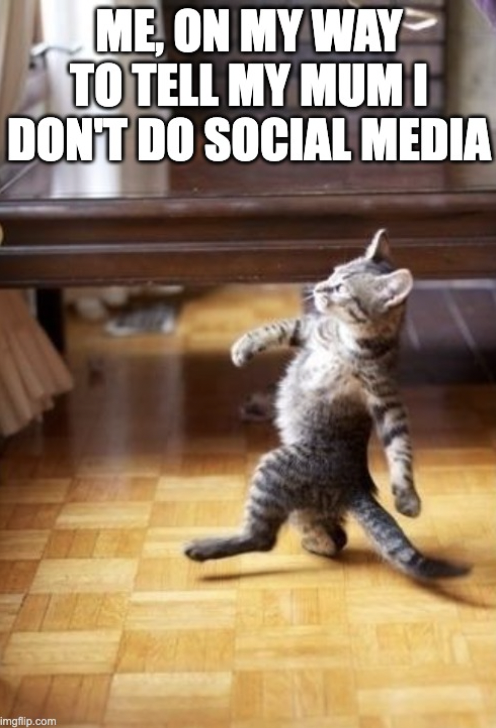Why Public Relations is Much More Than 'Writing A Press Release'
Blog by our Public Relations Account Manager, Anna Bolenkova Gillespie
I cannot tell you the amount of times, across my nine years of marketing and PR experience, that people have assumed the main job of a PR professional is to write press releases.
We do write press releases. But we also do so much more!
I mean, to be honest, my mum still thinks I post cute cat pictures on social media so writing releases is actually still a better assumption to make, and more in line with what I actually do, than this:
So, what exactly is PR?
Our Account Director, Orla, put it perfectly in her last blog, when she said:
“PR - or Public Relations - is one of the most effective ways to build reputation, understanding, brand awareness and most importantly, brand loyalty. PR is about understanding the brand’s messaging, WHO you are trying to target, HOW you target them and WHERE you target them.”
‘Aren’t marketing and public relations the same thing?’ - I hear you ask.
When I started out in content marketing, the landscape looked very different. I was tasked with promoting awareness of an e-commerce company which was still in its infancy.
The aim was to build backlinks to the website. And this was done through blogging, paying for guest posts on other blogs, and generally just annoying any high-ranking website owner to link back to the e-commerce website.
And whilst backlinks are hugely important in today’s digital landscape, back then it was about quantity of links as opposed to quality, which we now know are most important when it comes to Google’s ranking factors.
Both marketing and PR can help to achieve backlinks to increase a website’s online authority. And both are equally important.
Marketing, however, is concerned with the selling of a company’s products or services, whilst the role of public relations is to create awareness of that company. The tactics involved in both do have overlap, but also have distinct differences.
Digital marketing tactics include:
PPC
SEO
Email marketing
Search and social ads
Affiliate marketing
Content marketing
Influencer marketing
Whereas, public relations tactics include:
News creation
Brand activation
Press releases
Thought leadership
Reactive PR
Newsjacking
Influencer marketing
Data storytelling
PR stunts
So, how can a public relations agency help a business - and what do we actually do?
First and foremost, a PR professional would look at the wider context of the company. This is where the research stage begins.
In this instance, let’s say you’re a healthy snack brand.
Research (we call this INTELLIGENCE in DATS agency speak)
We’d look at your customer base and your target customers. Do they align?
If not, why not?
Where are your target customers?
What do they read?
Are they active on social media?
If so, who do they follow?
For a healthy snack brand, it’s wise to assume the target consumer is probably health-conscious or looking to make healthier lifestyle choices. In that case, they could have an interest in health publications, healthy living influencers, chefs, recipes and exercise.
We’d start by analysing all of these publications to determine what they write about, what the audience cares about, and then begin to examine and look at trending topics, evergreen subjects, and issues that come up time and time again.
Next, we’d look at the wider media landscape. What are the general health issues of the day? And what are journalists talking about in regards to health and wellness?
This helps us to form an opinion of how to position your company to the various media outlets. It also helps us decide which reporters to target, which influencers to partner with, complementary brands that could suit a collaboration and also, what kind of activation or event would suit your brand, as well as the people we’d invite.
Planning (this is where we get busy with IDEAS and INFLUENCE to build a channel strategy and creativity into the mix)
The next stage is looking at your business objectives to guide our planning stage..
Is it increasing market share?
Is it to successfully launch a new product or service?
Greater brand awareness?
Recruit and retain staff?
Corporate social responsibility?
Improve reputation?



